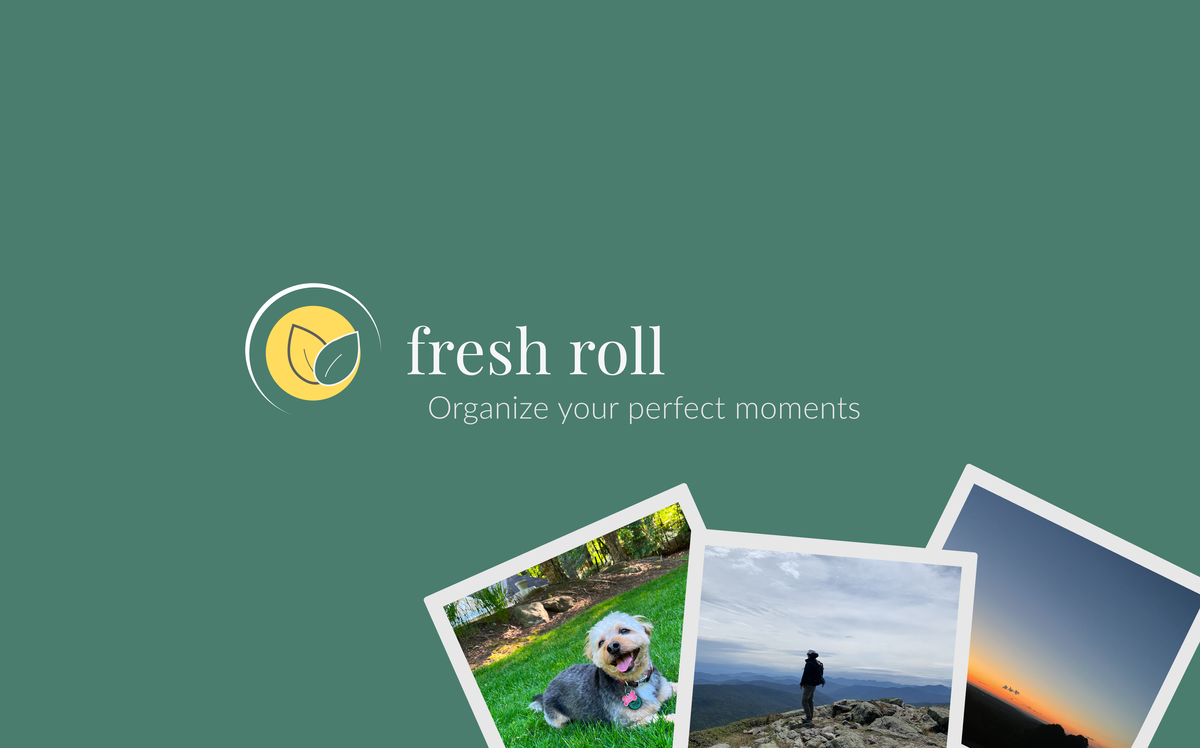02.1 - AI-powered Photo Organization with Fresh Roll

I wanted to start with a simple idea that blends a few technical curiosities I’ve been eager to explore with a personal need — photo organization. I’ll admit, I’m not the best photographer. My partner never misses a chance to tease me about my blurry, poorly framed vacation shots. To compensate, I take way too many photos, capturing the same scene from multiple angles. The result? I’m left with 20 nearly identical shots and no clue which one to keep.
Surely, there’s an app for this… right?
I’ve tried plenty of photo organization apps, but none quite did what I needed — and most were locked behind pricey subscriptions. Worse, since these apps handle personal photos, privacy was a big concern. I wasn’t comfortable with my pictures being uploaded to a third-party server. One app even requested access to my audio and location data… which made absolutely no sense for organizing photos.
Here's the product announcement
Organize your perfect moments -
Capturing the perfect moment requires multiple takes to make sure you get it right - the lighting, the angles, the timing. But it's hard to know which ones to keep and which ones to let go. Let Fresh Roll help you decide to declutter and organize your photos effortlessly.
Defining the problem & requirements
To simplify things, I’m narrowed the scope to a core problem and a set of high-level requirements to help set it apart.
Why - Primary Problem:
✅ Declutter and organize photos effortlessly. Help identify and remove similar photos, making it easy to choose the best shot and arrange photos into albums.
What - High-Level Requirements:
- Fast and Privacy-Focused: All photo processing happens locally on the device. No internet connection required.
- One-Time Payment: Non-subscription pricing model.
- Smart Quality Assessment: Automatically evaluate image quality to suggest the ideal photo to keep.
Who — The Audience for an App Like This
Primary Audience
Privacy-conscious millennials and Gen Z users who tend to hoard photos.
Photo-Taking Behavior
They often take multiple shots to get the perfect picture. They’re aware that in group photos, someone’s eyes might be closed, or if they’re photographing pets or babies, the subjects don’t always stay still. To cover their bases, they capture different angles and lighting variations, giving themselves more options when choosing the best shot. However, when it comes to reviewing these photos, they struggle to pick the best one from a set of similar shots, leaving their camera roll cluttered with duplicates and near-duplicates.
Wants / Desires
While they’re not overly concerned about optimizing cloud storage — since storage is becoming cheaper — their main goal is to clean up their camera roll to make it easier to share curated collections with friends and family. They’re familiar with modern apps and expect a fast, simple, and intuitive user experience. Privacy is a top priority, and they don’t want to share their private media (photos and videos) with untrustworthy third parties beyond secure cloud storage.
How — High-Level Approach
This project has two main focuses: building the app and acquiring users. Below is a high-level overview:
Development
To build this app, I’ll leverage the best available tools in 2025. After evaluating different options, I’ve identified a few that I believe will be most effective:
- Expo / React Native — A cross-platform framework that simplifies development for both iOS and Android. I’ll start with iOS since I’m an iPhone user and feel more confident testing and refining the experience on that platform first.
- PyTorch / CoreML — To identify and group similar photos, I’ll use on-device machine learning frameworks like CoreML and TensorFlow Lite. These ensure fast image processing while maintaining privacy by keeping everything local. Although I have some experience with these technologies and pre-trained computer vision models, I'll lean on AI to get me back up to speed and for initial examples.
The models I plan to develop will focus on two key tasks:
- Grouping Similar Photos — Automatically clustering similar images to make it easier for users to review and organize them.
- Ranking Photos by Quality — Identifying the best shot from a group of similar images to streamline the selection process.
The biggest unknown — and the riskiest part — will be how effectively I can develop models to achieve these goals. This is something I’ll need to de-risk early on.
Acquisition
Acquiring users will be the bigger challenge — building the app feels relatively straightforward in comparison. Originally, I had planned to charge a nominal amount for using it so that we can set aside a budget of around $1,000 for user acquisition, treating it as a small “education fund” to experiment with different marketing approaches - however, in order to really test out what we can do here and especially since it's the first project, my plan is to launch it for free to keep things simple and explore more with organic acquisition. In this attention-economy, I know this will be a challenge but I think we'll learn more about sustainable techniques and strategies in 2025 by doing it this way.
Over the next few weeks, we'll dive into how we plan on building it, challenges that pop up, and the launch. The goal is to try and spend a couple hours each day on it to make small, consistent progress. Follow along and subscribe to stay up-to-date.
